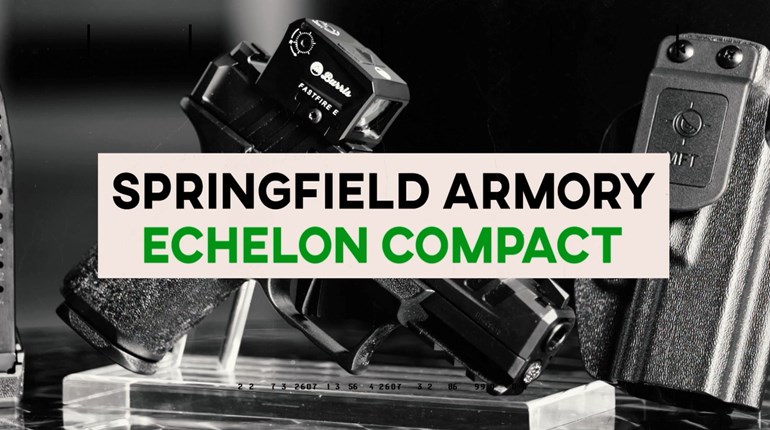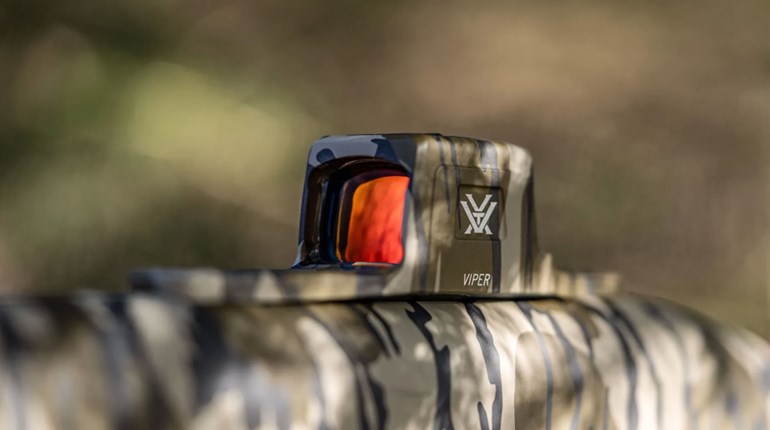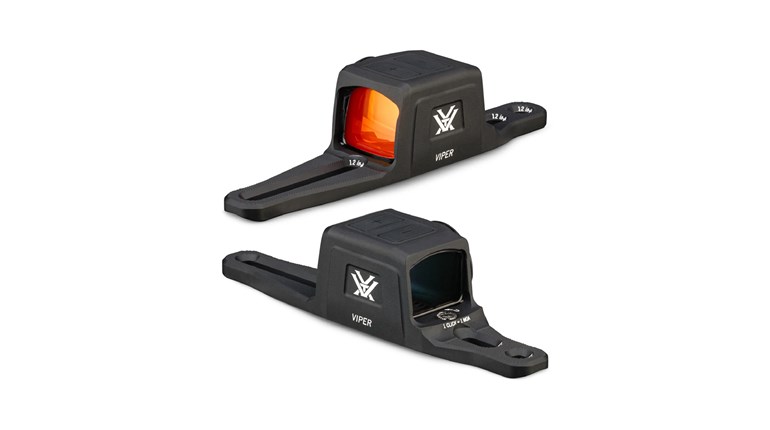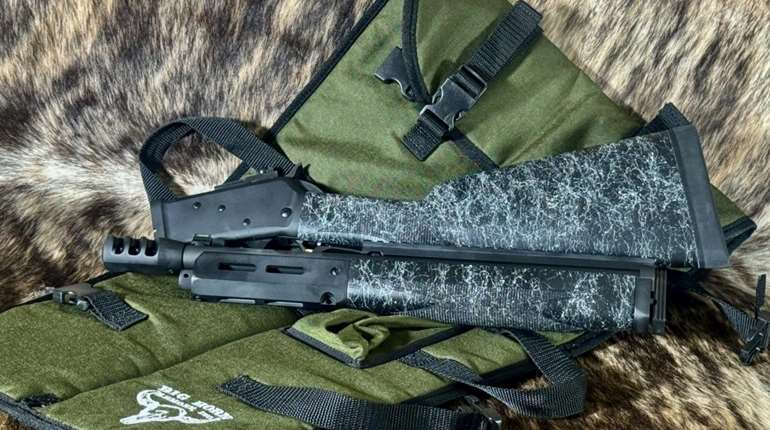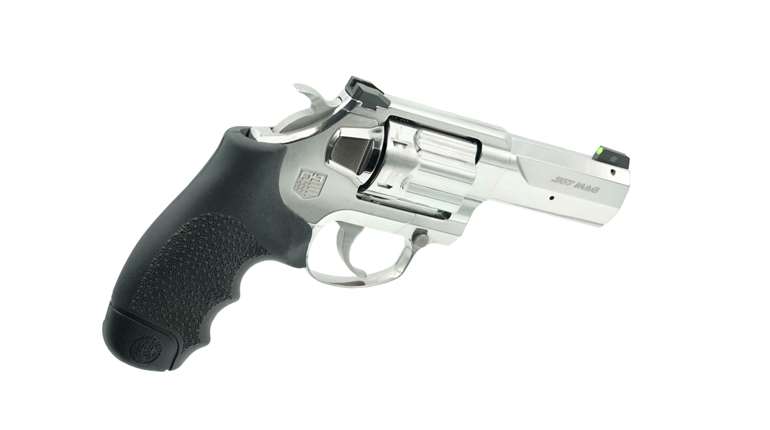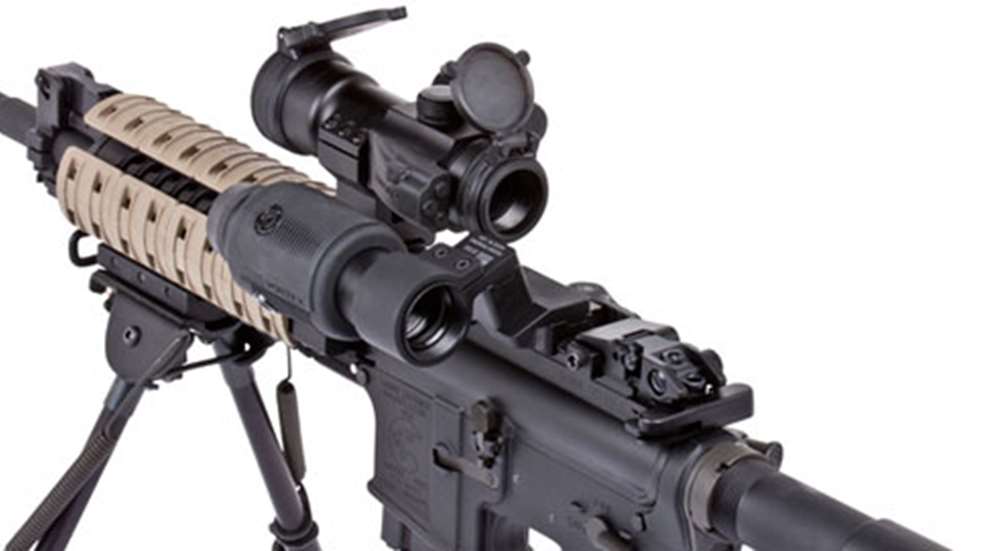
I have a horrible confession to make.
Nine days out of 10, my daily routine starts with the percussive abuse of an alarm clock before I shower, make coffee and head into the world to deal with the terrors of suburbia. I'm not an elite operator with hundreds of hours of combat experience or thousands of hours of training under my belt. I will never emerge from still tannic waters like the Swamp Thing, nor from the howling storm in the dead of night to bring rough men to rougher justice in a foreign land.
Without Uncle Sam's deep pockets or the constant threat of combat, I could never justify spending hundreds or thousands of dollars on high-end optics and nearly as expensive mounting systems. Instead, I wanted glass that can handle rattling around in the back of a truck, shrug off the occasional drop or come out of the safe after months unattended to work intuitively, without my having to think about them at a moment's notice.
Fortunately for me, Vortex Optics makes the StrikeFire, a solid and dependable tube-based red-dot sight aesthetically similar to the vaunted Aimpoint Comp and 9000 families, at somewhere between 2/3 to 1/2 the cost. A complementary piece of equipment meant the extend the range of the unmagnified red-dot, Vortex created the VMX3, a 3X magnifier equipped with a nifty and dead-simple flip-to-side (FTS) mount.
Don't expect me to claim that the StrikeFire/VMX3 combination is close to being on par with the visually similar Aimpoint with its magnifier, or the EOTech Holographic Weapons Sight and its 3X magnifier. They aren't made to fit the same roles, and Vortex Marketing Manager Mark Boardman never made any claim about Aimpoint or EOTech being direct competitors in the high-end combat-optics market.
What Vortex does with the StrikeFire is give shooters a solid and dependable 30 mm tube-style red-dot sight that is weatherproof, not SCUBA-capable. They've created an optic that can rattle around in a truck's toolbox as it goes down a rutted farm road without danger of losing zero or failing, even if it may not necessarily work if dropped 300 feet out of a helicopter (I'm sorry, I couldn't test this exact scenario because my Blackhawk was getting detailed).
Like the StrikeFire, the VMX3/FTS mount combo is visually appealing and entirely functional within the range of normal everyday use and abuse a civilian could expect to heap on an AR-15. It wouldn't be my first choice in day-after-day 120-degree heat, nor in months of Arctic cold, but if I'm at either of these temperature extremes, my first thought will be to fire my travel agent.
The StrikeFire comes in two flavors: a 4-MOA red-dot and a 4-MOA red/green-dot. Each comes in your choice of low rings or an ultra-high mount. The low mount works well for carry-handle ARs and most other rifles with a Picatinny rail, while the ultra-high mount provides an absolute co-witness with iron sights on flattop ARs. I tested the red/green version with the 30 mm ultra-high mounts, which has an MSRP of $229.
My Templar Custom MCWS was the test-bed for the StrikeFire/VMX3/FTS combo. I mounted the StrikeFire first, finger-tightening the mount before using a flathead (slotted) screwdriver to crank the nut down an extra quarter-turn to make sure it wouldn't shake loose. The folding backup iron sights (BUIS) were kept up just long enough to note that the StrikeFire's dot co-witnessed as claimed, and the irons appeared to be roughly centered. The BUIS went down and it was time to work.
Like most red-dots in this price range, the "dot" isn't a perfectly round and crisp image like you'd expect on some high-dollar optics, it's more of a 4-MOA blob of converging dots. In this particular sample of the StrikeFire, the green-dot presented itself as a pair of touching circles in a horizontal figure-8 with a slight bit of barely noticeable vertical lens flare at the brightest daylight setting. The red-dot presented a similar picture, but without the lens flare. These minor imperfections seemed notable for about as long as it took for me to write about them, and weren't a factor at all when it came to using the optic.
One thing I did notice about the color of the dots is I had a strong personal preference for the green dot in all light conditions. The red dot washes out during daylight at even the brightest settings, while the green dot was easy to pick up regardless of the environment. The StrikeFire even has one-touch night-vision settings in other colors, which would be excellent for hunting use in dawn/dusk conditions, or in darkened interiors. Unfortunately, I don't own night-vision equipment, so I'm unable to provide any critique of how the scope functions with real NVGs.
Adjusting the dot's position was dead-simple. The horizontal and vertical adjustments are hidden below screw-on caps to protect them from accidentally being knocked out of alignment, and a coin—preferably a quarter—adjusts the dot's position ½ MOA per click. The StrikeFire has a 100-MOA maximum vertical and horizontal adjustment range, though I profess that I can't think of a single reason for a close-range 4-MOA optic to need that much travel. Sighting in was simple, and the perfunctory box test worked as expected.
The VMX3 "tripler" is a solid application of a simple concept. Red/green/fuschia/mauve/etc.-dot scopes are generally close-range optics used for close-quarters out to a practical maximum range of 150-200 yards, depending on the shooter. A magnifier like the VMX3—shockingly—magnifies the image, making the target appear that much closer and enabling a bit more precision. It extends the practical range for the average Joe to perhaps 300 yards. Considering most dot/magnifier combinations are mounted on 5.56 NATO/.223 Rem. rifles, that range limitation is as much a function of the cartridge's optimal range and the 4-MOA dot size as it is the scope.
The VMX3 has a simple twist focus on the end of the ocular bell that is just tight enough so that it won't shift out of focus easily. Vortex added a nice touch to the VMX3, in that it has windage and elevation adjustments to help center the magnifier behind the scope. Such an adjustment of the magnifier doesn't affect the impact point of the shot, but it can improve the overall sight picture. This magnifier is of solid construction, and frankly, there isn't a whole lot more to expect out of a low-power magnifier. The base model VMX3 comes with a simple 30 mm bolt-on Picatinny mount.
If anything in the VMX3 is truly surprising (other than solid utility for the price), it is the quality of the flip-to-side (FTS) mount in the VMX3/FTS mount combo (MSRP: $319). Far from being a cheap knock-off, it is a high-quality, near bomb-proof American Defense quick-detach mount. While Vortex markets the StrikeFire as a home-defense and competition optic for civilian grades of abuse, the American Defense is top-notch military-grade gear.
Together, the StrikeFire red/green-dot 30 mm tube-style optic, VMX3 magnifier and FTS mount are an economical, but solid optical package designed for recreational shooting, law enforcement and home defense.
You can spend more...but why would you?












